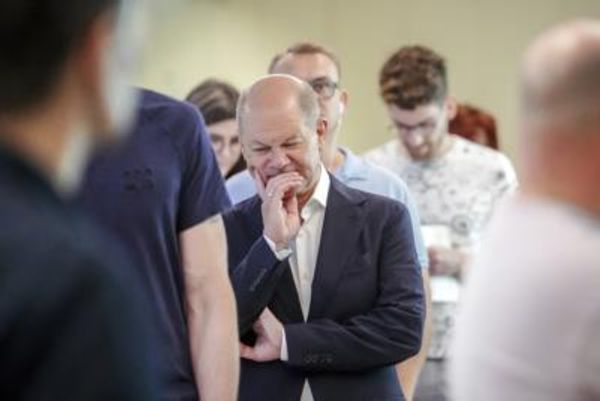
It is 1874 in Paris, and the early years of the Third Republic. Baron Haussmann has remodelled the city, creating the grands boulevards, and the national Opera House is almost finished. The French capital is emerging from the trauma of the siege of Paris that marked defeat in the Franco-Prussian war, the subsequent collapse of the Second Empire and the bloodshed of the Paris Commune insurrection.
Against this backdrop of modernisation, industrialisation and commerce, a group of largely unknown and struggling French artists decide it is time to make an impression.
On 15 April 1874, they gather at a photographer’s studio north of the Seine for an independent exhibition of works rejected by the jury of the annual Académie des Beaux-Arts Salon, held at the Louvre, the traditional and somewhat stuffy arbiter of artistic good taste.
The 30 or so members of this disparate Cooperative and Anonymous Society of Painters, Sculptors and Printmakers include Claude Monet, Pierre-Auguste Renoir, Edgar Degas, Berthe Morisot, Camille Pissarro, Alfred Sisley and Paul Cézanne. They have few personal connections and little common artistic style or vision other than a desire to show the world as it is, not as it has been.
Their exhibition is not a critical or commercial success, and is not held again – the society was dissolved the following year – but it would be later recorded as the moment impressionism was born.
Now, 150 years on, the Musée d’Orsay in Paris, which has the world’s largest collection of impressionist and post-impressionist masterpieces, is to open a major exhibition to celebrate impressionism and throw new light on an event that marked the advent of avant-garde art.
In a first for the museum, visitors will also experience a 45-minute virtual reality immersive trip back a century and a half to attend the 1874 exhibition and stroll down Haussmann’s bustling boulevards.

“The 1874 exhibition is the real moment that impressionism arrived,” said Sylvie Patry, joint curator of the new exhibition, which will open at the end of March. “It started then, but it was not known by that name and was not even a group as such: it was more of a large, diverse, pragmatic and chaotic network whose meeting was more of a coincidence.”
“The artists who had paid to take part had a common yearning to make a different kind of art based on the idea of portraying modern life as it was, with freedom, truth and realism, but they had not come together for any artistic project. It was a new force in art but the word ‘impressionism’ wasn’t used by the artists.”
The term “impressionist” was initially an insult – a synonym Parisian journalist Louis Leroy coined for “unfinished” in his sarcastic appraisal of Monet’s Impression, Soleil Levant, which captured the sun rising over the port of Le Havre and would later be hailed as the symbolic founding masterpiece of the exciting new movement.
Paris in the spring of 1874 was still suffering from the trauma of the capture of the French Emperor Napoleon III by Prussian forces and civil conflict. “The country wanted to forget defeat and civil war, and these themes were absent from the impressionists’ work,” Patry said.
Instead, the development of oil paints in tubes meant that Monet, Degas and Pissarro could leave their studios and paint outside, capturing natural scenes and the evolving industrial landscape of Paris.
Anne Robbins, curator at the Musée d’Orsay, said: “It’s interesting for us to show that this wasn’t just a question of art but a vision of the world and the artist’s place in it. They wanted to show a world that was undergoing profound change. Their criticism of the salon and the artistic canon it represented was that it was too backward-looking. They wanted to look at real life, like railway stations and industrial zones, not just beaux arts subjects that were considered sufficiently dignified to paint.”
Alongside the 130 impressionist works, including Impression, Soleil Levant, from private and public collections, the exhibition will also feature works that were shown at the 1874 salon to highlight what the catalogue describes as an “unprecedented confrontation between the ‘independents’ and ‘academics’ of the Beaux-Arts salon.
“Above all, the exhibition, Paris 1874. Inventing Impressionism, invites visitors to consider what constituted an impressionist work in 1874: what made it different and new? Initially considered confusing and slapdash, impressionist painting is now universally acclaimed, permeating a whole part of our visual universe,” the catalogue explains.
“A century and a half after its emergence, it’s time to take stock of impressionism as it emerged in the spring of 1874, and to re-examine its radical nature.”
The curators hope the exhibition will throw a new light on impressionism with the added fun of the virtual reality experience of stepping back in time by simulating the 1874 exhibition held in a photographer’s studio at 35 Boulevard des Capucines, which they say “will be a surprise for the public and even certain specialists!”

“Visitors will be able to walk through the exhibition rooms and hear the artists talking about the works. It’s meant to be amusing, not doctorate research,” said Robbins.
“It takes them back to the place of creation, a Paris that had been reconfigured by Haussmann to a new modern, commercial Paris and the chic district around the grands boulevards.”
In a separate event to mark the 150th anniversary of impressionism, the Musée d’Orsay is lending paintings from its collection, including those by Monet, Édouard Manet, Vincent van Gogh, Cézanne and Renoir, to 34 museums across France, including the island of Réunion in the Indian Ocean.
“Today it [impressionism] symbolises the French art of living for the entire world,” Rima Abdul Malak, the French culture minister said, announcing the loans last month.
*Paris 1874: Inventing Impressionism organised by the Musée d’Orsay and the National Gallery of Art, Washington, will run from 26 March to 14 July before transferring to Washington DC between 8 September 2024 and 19 January 2025







